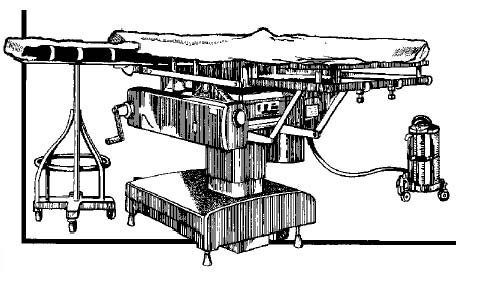Introduction to the Operating Room
LESSON 1: ORIENTATION
1-12
1-12. OPERATING TABLE
There are several types of operating tables (see figure 1-7) in use and all are rather complicated in construction and manipulation. They are designed so that they can be adjusted to the needs of the surgeon for any type of operation he may perform. The table is equipped with a hydraulic system. It is mounted on casters that are locked in place during surgery. The operating table shown in figure 1-7 is "dressed" or made up with sheets ready to receive a patient.
The enlisted 0R specialist assigned to circulate for an operation is responsible for assisting with the positioning of the patient. Therefore, he must have a detailed knowledge of the table as well as the many positions of the patient for surgery. A full discussion of the operating table, attachments, and use are set forth in Subcourse MD0927, Special Surgical Procedures I.
Figure 1-7. Operating table.


